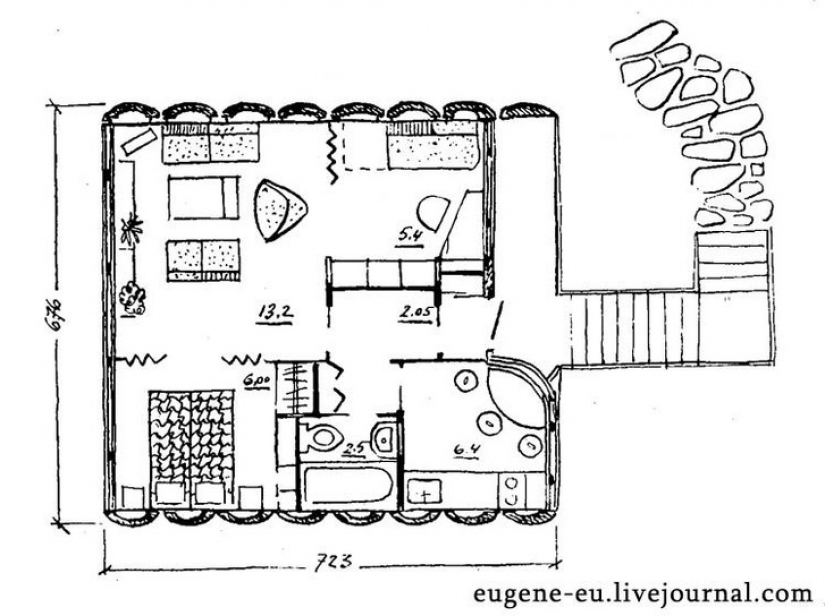Leningrad plastic house
Categories: Design and Architecture
By Pictolic https://pictolic.com/article/leningrad-plastic-house.htmlIn 1961 in Leningrad, was made a unique building experiment on the street Torzhkovskaya deep in the block between the house 24, block 1 and 24, block 2 was built a small mansion. Its uniqueness was not in a bright architectural appearance, is not that among the typical five-story Khrushchev suddenly had single-family mansion, and the fact that it was made from... plastic.

In fact, the house was two-storey. The lower floor was technical, where there were various communications and installation of air heating and ventilation. The walls of the technical floor was designed as a reinforced concrete frame filled with glass blocks. Plastic was the upper (residential) floors, raised 2 meters 20 centimeters above ground level.
Unfortunately, the plastic house to the present day not lived. So now looks like the place where he once stood.

The building on the left has the address: Torzhkovskaya str., 24, building 2 — now it works podrostkovo-youth club "Yunost". In the distance is a typical four-story building, which now is the Palace of creativity of children and youth.

The authors of an experimental house of plastics was the architect A. P. Shcherbenok and engineer L. G. Levinsky.

Home wall mounted from panels made from two layers of durable fiberglass with the prisoner between them a layer of polystyrene foam (used as insulation). Maximum wall thickness was 14 cm, the rigidity attached to them a kind of skorlupki design. Experimenters, engineers then calculated that the thermal insulation properties of such plastic "sandwiches" will be equal to two-meter brick wall.

In a plastic house designed Studio apartment with a kitchen, bathrooms, a pantry and a small terrace. The authors came up with the maximum number of items of plastics: huge Windows were made of Plexiglas pipes of rigid PVC, the Wallpaper of PVC film on the paper base. (Illustration from the page mgsupgs.livejournal.com/1089540.html.)

In this little house no one lived. The main purpose of the experiment was to check the manufacture of various construction plastic products, as well as the study of the operational parameters of the plastic buildings.

The results of analysis and generalization of three-year observations of the first domestic fully plastic house since the mid 60-ies moved on to the practical implementation of plastics in construction. In Moscow in 4-th Vyatskiy lane was built plastic five-storey building.

The experiment was widely covered in the press. In addition to national publications, from specialized to non-fiction, photographs of the Leningrad plastic house appeared in foreign journals.

It should be noted that Soviet plastic house was not the only one in the world. In 1957 a plastic "house of the future" built in Disneyland.

In 1963 Dieter Schmidt built his plastic house, structurally similar to the Leningrad counterpart.

In 1969, Germany built another plastic mansion, surpassing the size of their predecessors.
The first domestic plastic house was a laboratory for three years. And then it was easy to forget. The house slowly fell into disrepair, destroyed by time and vandals. In the end, the remnants of his demolished.
Keywords: House | Leningrad | Plastic | USSR | Construction | Experiment
Post News ArticleRecent articles

Winter is a special time of the year, someone is afraid of her, someone is waiting for snow days to build a snowman or go down the ...

The heroes of their photos are used to humiliate others, cheerfully and carelessly shoot everything on the phone and post the ...
Related articles

Now we can keep our savings in a bank or, if we don't trust financial institutions, put them in a safe and keep them at home. And ...

Today we will show you photos of real people who live in tiny houses — most of these dwellings have an area of less than 18 ...

When guests are expected in the house, they try to put everything in order that is possible. No one wants to show the wrong side of ...

Every day, photographers around the world are looking for new ways to tell stories or capture something we haven't noticed ...